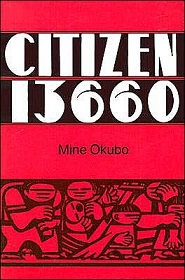Proof that comics can be literary powerhouses, too

My early childhood was spent in a magical land far, far away, where there were no skyscrapers, no traffic lights, and no television. To fill the yawning void of time that otherwise would be spent gawping at the boob tube, we did things like play outdoors, climb trees, and use our sparkly imaginations.
Besides going to the one and only local cinema — where sitting under the balcony meant getting pelted with food whenever the villain came on screen — the closest thing to television was comic books. With their glossy covers, the slightly repellent texture of the rough, pulpy paper, the sharp smell of newsprint, and the lurid colors, they were a delicious mixture of the forbidden (there were no comics at my house) and the utterly enrapturing, offering a warped lens onto American society: the malt shops and dating rituals of Archie; the ridiculous luxury lifestyle of Richie Rich; the beguiling rectitude of Wendy and Casper, who were staunchly dedicated to protecting unsuspecting muggles from the dastardly scheming of their witchy and ghostly kith and kin; the implacable jollity and middle-class smugness of Mickey Mouse and his unending coterie of duck, dog, and cow spin-offs.
When we returned to the United States, TV, the novel, and the lameness of “Garfield” killed my devotion to comics.
It wasn’t until I moved to another magical land far, far away that I rediscovered the joys of comics. This land had skyscrapers, traffic lights, and television, as well as a rich tradition of manga, which went well beyond the stuff for kiddies (though there’s plenty of that), encompassing everything from schmaltzy romance serials to hardcore porn, high-school dramas to battling super-power-endowed teens, samurai sagas to space wars. I discovered that comics could deal with serious subjects in poignant ways and tell a story with the same impact as a novel.
Back stateside, I found there was a thriving industry of comic books for adults, rebranded as graphic novels. The categorization of all narrative comics as graphic novels is somewhat misleading, for it is the nonfiction historical graphic novel that I most enjoy, perhaps because I generally regard reading nonfiction as a chore. As the cliché goes, a picture is worth a thousand words, and a few powerful panels can instantly convey the emotion and import of a complicated moment in history.
Here are some of my favorite “epic stories told in tiny pictures,” as a blurb for one of them so eloquently describes the historical graphic novel.
- Barefoot Gen by Keiji Nakazawa. In 10 volumes, Nakazawa depicts the final moments of Imperial Japan and the hardships endured by the Japanese after defeat. The autobiographical series follows Gen, a schoolboy from Hiroshima, whose father’s unwillingness to cooperate with the demands of the fascist regime brings trouble to the family. The first volume ends with the atomic bomb explosion. Subsequent volumes present the horrific aftermath of the bombing, the corruption and criminality that crept into the country’s post-war power vacuum, and life under the American occupation. Readers follow Gen as he is orphaned, joins a gang, hustles to survive, and becomes an artist, all while living under the dark shadow of the bomb.
- Buddha by Osamu Tezuka. Actually, there are any number of books by Tezuka, “the god of manga,” that I could recommend. You may know him from the cartoons “Kimba the White Lion” and “Astro Boy.” His work is iconic in Japan, and he is the originator of the big, bubbly-lit eyes and the cinematically framed action that are identifying characteristics of manga today. Buddha is Tezuka’s eight-volume biography of Siddhartha Gautama. Combining humor, horror, and humanity, Tezuka teaches the tenets of Buddhism in an accessible and enjoyable way.
- Citizen 13660 by Miné Okubo. Published in the excellent University of Washington Press Classics of Asian American Literature series, this moving portrayal of the Japanese-American experience during World War II is an important precursor to the American graphic novel. In approximately 200 black-and-white line drawings, Okubo tells the story of her internment, from her initial stop at an “assembly center,” where “evacuees” were housed in horse stalls, to her eventual incarceration in Topaz, Utah. The expressive pictures and accompanying captions vividly express the humiliation and hardship of 120,000 people, many of them American citizens, who were rounded up like cattle and crowded together into camps in isolated and inhospitable locations.
- March by John Lewis, Andrew Aydin, and Nate Powell. This three-volume autobiography of civil-rights icon and U.S. Congressman John Lewis plunges the reader into the violence and drama of the early civil-rights movement. The courage and sacrifice of those on the frontline of the sit-ins, picket lines, and demonstrations is portrayed with white-knuckled (pun intended) brutality. From the sprawling panorama of the March on Washington to a close-up of a radio delivering news of the firebombing of a freedom rider bus, illustrator Nate Powell skillfully conveys both the minutiae of the struggle and its sweeping historical implications.
- Maus by Art Spiegelman. Pulitzer Prize-winning Maus made graphic novels respectable and is a staple of high-school reading lists. Drawn in heavy lines and lots of cross-hatching that reveal a dark and dangerous world, this two-volume saga tells the story of the author’s father’s experience as a Polish Jew during World War II. By depicting the Jews as mice and the Nazis as cats (and Poles as pigs), Spiegelman reframes the familiar Holocaust narrative. Even the hero isn’t a hero, as his father is shown to be a difficult, pathologically stingy, and bigoted man who has a strained relationship with his son. Rather than history populated by heroes and villains, the book tells the story of those who survived the Holocaust and those who didn’t.

